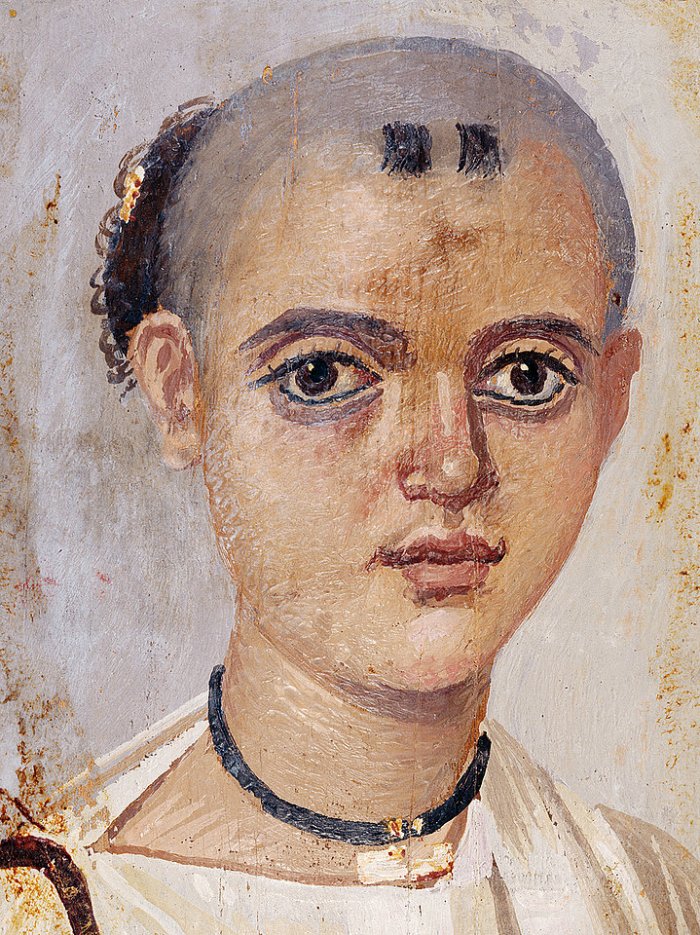Jan Bartek – AncientPages.com – Worn as a note in an amulet around the neck, deposited in a grave, or found as a manual in a scholar’s library: magical texts were once widespread. They were used, among other things, in the hope of gaining divine help in finding a partner, protection from adversaries and diseases, or support on the way to the afterlife.

A young man wears an amulet with a magical text on a necklace in this mummy portrait from Imperial Egypt (150-200 AD). PH๏τo: Getty Museum, Malibu. (Image: Getty Museum, Malibu)
“Such texts, which are referred to as ‘magical’ in modern research, are prominent in the written traditions of all ancient cultures of West Asia and the Eastern Mediterranean and represent an important source for the history of religion and ideas in antiquity,” says Daniel Schwemer, Professor of Ancient Near Eastern Studies at the Julius-Maximilians-Universität Würzburg (JMU). Together with his colleagues Daniel Kölligan, professor of Comparative Linguistics, and Martin Andreas Stadler, professor of Egyptology, he will be taking a closer look at such magical texts in the coming years.
As the Deutsche Forschungsgemeinschaft (DFG, German Research Foundation) announced on 27 June 2023, the three professors were successful with their application to establish a new Centre for Advanced Studies in Humanities and Social Sciences. Under the heading “MagEIA – Magic between Entanglement, Interaction, and Analogy”, they will research the magical text traditions of the ancient Near East, Egypt and neighbouring regions over an initial period of four years. The DFG is funding the project with approx. 3.5 million euros in the first phase.
Looking beyond the boundaries of disciplines
Of course, magical texts have been intensively researched in the past; there is a long list of publications on the subject. “In overarching studies on the history of magic in Western cultures today, the magical texts from ancient Egypt and Mesopotamia are routinely presented as the earliest influences on the traditions developing in late antique and post-antique Europe, in addition to the Greco-Roman world,” explains Martin Stadler.
Conference volumes and handbooks on magic in ancient cultures however “largely reflect disciplinary boundaries” and hardly address cross-cultural correspondences and relationships. “Questions about the interconnections, interactions and analogies between the different traditions of magical texts remain unexplored, and the reciprocal relationships remain poorly understood,” says Daniel Kölligan.
For this reason, the new research group takes a different approach: MagEIA will serve as a forum for combining philological and comparative research on ancient magical text traditions and to promote sustainable cooperation between different philologies as well as history of religion, cultural anthropology and archaeology.
New methods of text analysis
This approach is also reflected in the structure of MagEIA: its core is formed by the three scholars with their teams in Egyptology, Ancient Near Studies and Comparative Linguistics. They are supported by other members of the JMU from Classical Philology, Ancient History and Biblical Studies.
Grouped around this core are visiting scholars as fellows who come from a wide variety of disciplines and specialise in the various magical text traditions in antiquity. With their work, they will ensure that a representative selection of sources is considered in the research project; they will also contribute a variety of research designs, methods, data types and disciplinary perspectives.
According to the three Principal Inverstigators “the new Centre for Advanced Studies in Humanities and Social Sciences MagEIA will develop methods of textual analysis and models of cross-cultural comparison that will take the study of magic in antiquity to a new level”. The Centre will provide new insights into how texts – and thus knowledge – could spread in an area from the Eastern Mediterranean to Central Asia several thousand years ago.
Written by Jan Bartek – AncientPages.com Staff





